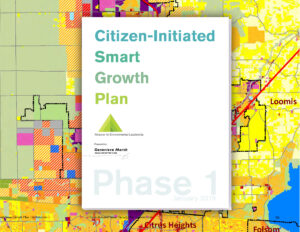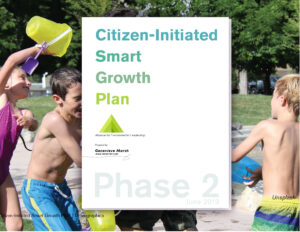We advocate for Smart Growth because we know that it makes our towns better to live in and assigns value to the environment.
Development guided by Smart Growth principles minimizes air and water pollution, reduces greenhouse gas emissions, encourages cleanup and reuse of contaminated, vacant and abandoned properties, and preserves natural lands. With Smart Growth, the jobs/housing needs of everyone in the community are met and people feel secure, healthy and ultimately happy. Our environment is appreciated, protected and enhanced and damage to the environment is minimized. Our economy is vibrant, employment and housing opportunities are improved and our working lives are more rewarding.
We need clear perception, access to technological resources and a broad range of solutions if we are to simultaneously accommodate population growth, cultivate economic development and protect the environment. We, environmentalists, start with a vision and a roadmap as represented in Smart Growth principles. In our Smart Growth case study, the Citizen-Initiated Smart Growth Plan Phase 1 (CISGP 1), we calculated the development impacts on a 10,000-acre Placer County site in two build-out scenarios of comparable development intensity: one is Smart Growth and the other is conventional urban sprawl. We found that the people the economy and the environment benefited from the Smart Growth scenario because:
These benefits, along with the results of over 60 additional metrics, have inspired us to take our planning to a county-wide level. In 2020, we are gearing up to produce a county-wide Smart Growth plan, called the Citizen-Initiated Smart Growth Plan 3. Subscribe to stay tuned in to how it develops.
In the mean time, here are our major publications:

CISGP 1
This is the main publication of our Smart Growth case study in South Placer. It illustrates our process, environmental research, proposal, and all the metrics we measured. More >

CISGP 2
This follow up publication focuses on county growth, housing types, and housing demand. It busts myths about the infeasibility of multifamily housing and who relocates to Placer County. More >
Our Pioneering Planning Method
In September 2020, the California Energy Commission invited our urban planning consultant Genevieve Marsh to present the CISGP’s unique planning method at their EPIC Forum. Focusing on decarbonizing California, Marsh’s presentation demonstrated to the audience how the planning process alone can assist state wide decarbonization efforts. Here is her presentation:
Curious if a project meets Smart Growth Standards?
There are lots of rubrics developed by Smart Growth groups that help score projects. Evaluating your project with the EPA’s Smart Growth standards:
Frequently Asked Questions
Smart Growth is a standard for development that focuses on the long-term health of our existing communities and the environment. Its principles are applicable to large and small areas- such as county-wide zoning plans and single-site building projects. It brings a holistic approach to the design and decision-making process by balancing economics, environment, and quality of life. And, importantly, each objective can be quantitatively measured to enable decisions to be based on comprehensive data and research.
Here are some of the main objectives:
- Minimize the impacts of new development, including public infrastructure costs, congestion, air pollution, loss of agriculture land, etc.
- Provide greater accessibility and choices in how we move about from home, work, shopping and leisure activities
- Stabilize and improve long-term financial performance for commercial and home owners
- Maximize the return from public investments in existing and new roads, schools, utilities, transit systems, bridges, waterways, etc.
- Protect natural habitat and watersheds for the future with scientifically proven methods
- Foster a greater sense of connection, responsibility, and continuity for citizens with their communities
Smart Growth has been around for a long time and there are many case studies of it around the world. Some of the case studies that we find most inspiring are:
Placer County projects tremendous growth but has no comprehensive vision for where to put everyone.
Placer County is projected to absorb a tremendous amount of growth from people relocating within California. As the cost of living rises in the costal cities, those that become financially strained see Placer County as a more affordable and attractive place to live. Most of these people are young people and young families. Fortunately, this influx of young people helps balance Placer’s aging population. (We’ve wrote a whole report on this, peruse CISGP 2 here.)
Placer County’s response to this growth has been on a project by project basis without an overarching organizational structure. Since there is no comprehensive plan to look at, we overlaid all the current and proposed plans (county, city and community) to see what we would find. The plans add up to a near-complete conversion of farmland and grassland to single family low-density sprawl. Take a look, light yellow is single family low-density sprawl:
CURRENT SATELLITE

50 YEAR BUILD OUT

We seek to create a Smart Growth 50 year plan to correct this trajectory.
The types of houses we live in determine our individual environmental impact. When we add up everyone’s impact, we get tremendous degradation of habitat, natural resources, and air quality. If we advocate for house types that are gentler on the environment at the policy level, we can help curb the negative externalities. It also happens that we end up with more achievable housing and desirable, walkable neighborhoods. We see this as a win-win.






